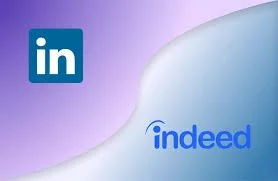
How to Explain Being Laid Off on Your Resume
Getting laid off can feel like a personal setback—but it’s not a reflection of your worth or capabilities. Layoffs happen for reasons outside of your control: restructuring, budget cuts, mergers, or shifts in company priorities. What matters most is how you move forward—and that includes how you tell your story on your resume.
Here’s how to explain a layoff with honesty, professionalism, and confidence:
1. Be Transparent (But Brief):
In your experience section, you can simply note “Position eliminated due to company-wide layoffs” or “Laid off as part of a department restructure.” Keep it short and to the point.
2. Focus on Your Impact:
Your accomplishments and skills didn’t disappear with the job. Highlight what you achieved in the role—metrics, projects, or improvements you led. This is what employers care about most.
3. Fill the Gap (If There Is One):
If there’s a gap between roles, consider listing any relevant freelance work, certifications, volunteer experience, or professional development. It shows initiative and growth.
4. Own the Narrative:
A layoff is a career event—not your whole story. When you frame it with clarity and dignity, it shows resilience, not weakness.
Remember, you're not alone. Many talented professionals have navigated layoffs and gone on to thrive. Your resume is a tool to move forward—and you have every right to be proud of what you bring to the table.

Why C-Suite Resumes Often Miss the Mark
At the executive level, your resume carries more weight than it often gets credit for. It’s not just a record of where you’ve been—it’s a reflection of how you think, lead, and deliver value. Yet, many resumes for CEOs, CFOs, COOs, and other senior leaders fall short. Not because of a lack of experience, but because the way that experience is presented doesn’t match what today’s decision-makers are actually looking for. Here are a few common ways C-suite resumes miss the mark—and how to realign yours.
1. It’s a Chronology, Not a Narrative A list of impressive titles and responsibilities might seem like enough—but for boards, investors, and executive recruiters, it’s the story behind the experience that matters. What challenges did you inherit? What strategic decisions did you make? What changed because you were there? Takeaway: Resumes should show business leadership in motion, not just milestones.
2. It Doesn’t Reflect Today’s Executive Landscape Executive roles have evolved. Beyond operational excellence, today’s organizations look for agility, innovation, emotional intelligence, and the ability to navigate ambiguity and drive transformation. Takeaway: If your resume focuses only on traditional metrics and misses these broader leadership competencies, you may be underselling yourself—especially in industries undergoing rapid change.
3. It’s Hard to Read Quickly In most searches, especially at the executive level, recruiters are reviewing dozens of highly qualified resumes. The ability to scan quickly and immediately identify key wins, leadership themes, and business results is critical. Takeaway: The top third of your resume should make a clear and immediate case for your value.
4. It Leans Too Heavily on Jargon or Generalities Internal acronyms, vague descriptors like “responsible for,” or overused buzzwords can cloud your message. Precision and clarity are far more impactful. Takeaway: Use language that’s accessible to those outside your organization or industry. Focus on outcomes, not just activities.
5. It Doesn’t Match Who You Are Now Many executives haven’t updated their resume in years. What once reflected their strengths or ambitions may now feel outdated or disconnected from their current leadership style or aspirations. Takeaway: Your resume should evolve with you. It should reflect your most relevant experiences, aligned with the kind of role you want next—not just the ones you’ve had. Final
Thoughts A well-crafted C-suite resume isn’t about self-promotion—it’s about clarity. It’s about helping the right people understand what kind of leader you are and what kind of impact you can deliver. Whether you’re actively exploring opportunities or simply staying prepared, reviewing your resume through a strategic, modern lens is well worth the effor

Indeed vs. LinkedIn: Which One Should You Use for Your Job Search in 2025?
Job searching can feel overwhelming—especially when you're not sure where to focus your time or energy. With so many platforms out there, it's easy to wonder:
"Am I even looking in the right place?"
If you’ve found yourself torn between Indeed and LinkedIn, you’re not alone. These two platforms dominate the space, but they serve very different purposes. Depending on your goals, industry, and where you are in your career journey, one may be a better fit—or you might benefit from using both, intentionally.
Let’s break it down in plain terms.
What Makes Each Platform Unique
Indeed is like the “Google of jobs.” It pulls listings from company websites, boards, and direct employer postings. It’s fast, straightforward, and offers a lot of listings—sometimes too many.
LinkedIn is more than a job board. It’s a professional network where people build connections, share expertise, and quietly explore new opportunities. Many recruiters use it daily to find and vet talent—even for roles that aren’t publicly posted.
Which One Works Better—It Depends on What You’re Looking For
Here’s how they tend to stack up:
Use Indeed if you...
Need to apply to multiple roles quickly
Are looking for hourly, entry-level, or high-volume opportunities
Prefer simplicity and speed in the application process
Are in logistics, healthcare, trades, or customer service
Use LinkedIn if you...
Want to find professional, mid-level, or executive opportunities
Prefer to research companies before applying
Want to network your way into roles or get referrals
Are in fields like tech, marketing, finance, HR, consulting, or leadership
How It Actually Feels to Use Them
Indeed can feel like you’re casting a wide net—lots of listings, quick applies, and sometimes... radio silence.
LinkedIn feels more personal. You see who works where, who posted the job, and you can even message people directly. You’re not just another applicant—you’re part of a conversation.
If you've ever applied to dozens of jobs and heard nothing back, you're not alone. The truth is, many platforms are built around volume. But real traction often comes when someone sees you—your story, your skills, your direction—and thinks: this person gets it.
That’s where LinkedIn often edges ahead.
What If You Used Both—But Smarter?
The best approach? Use Indeed for exposure and broad reach. Use LinkedIn to build relationships, show your value, and tap into the hidden job market.
Here’s how:
Apply through Indeed, but follow up on LinkedIn
Engage with companies or leaders you admire on LinkedIn—even if they haven’t posted a job yet
Make sure your resume and LinkedIn profile tell the same, consistent story about who you are and what you’re ready for next
Final Thoughts
Job searching isn’t just about being qualified—it’s about being seen. And in 2025, that often means being thoughtful about where and how you show up.
You deserve more than just sending your resume into a void. You deserve to be noticed for the value you bring.
So whether you lean on Indeed, LinkedIn, or both—know this: the tools matter, but how you use them—and how you tell your story—matters more.
If you're not sure your resume or LinkedIn profile reflects your true potential, you're not alone. It’s okay to ask for help. Sometimes, a fresh perspective is all it takes to unlock the next chapter.
